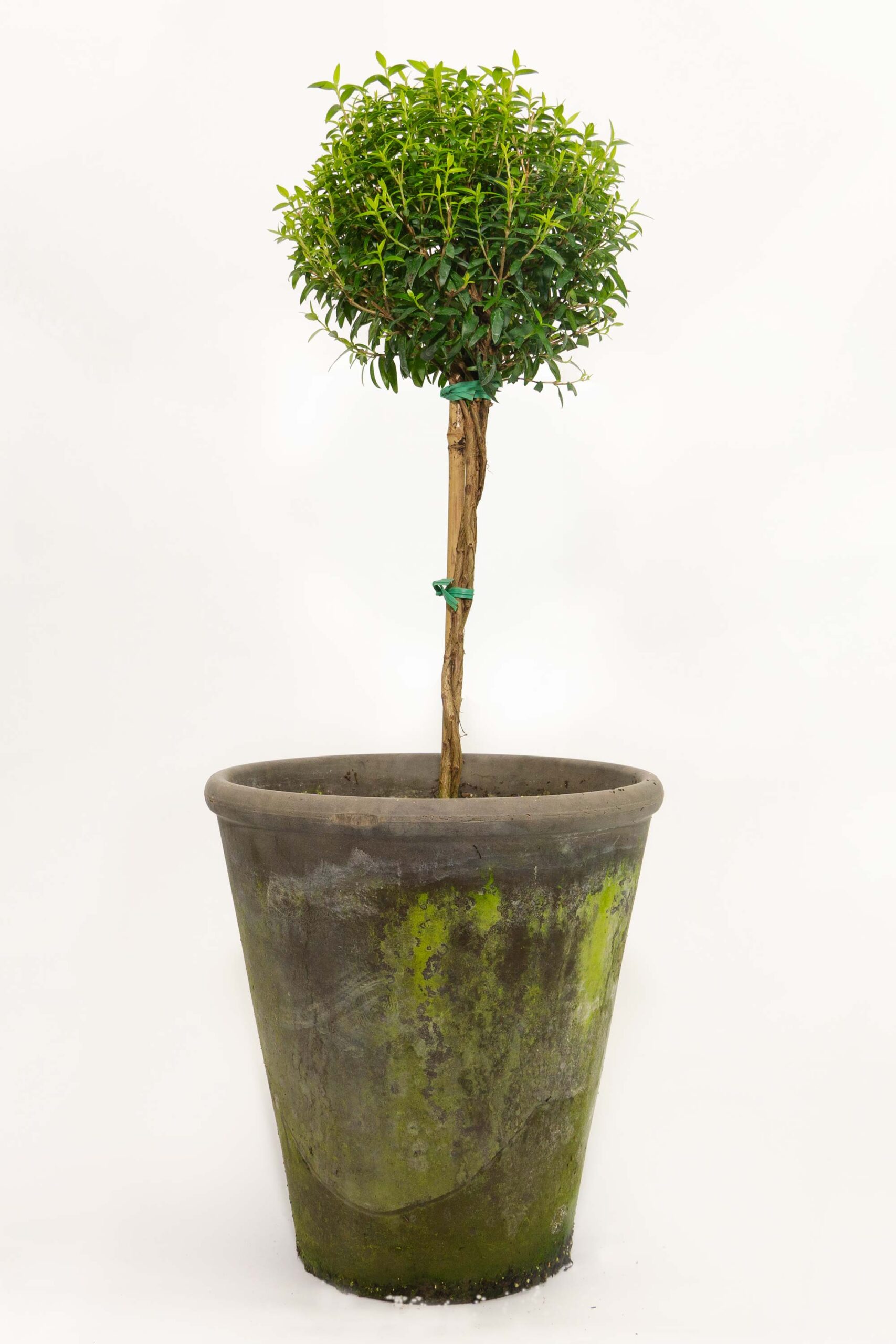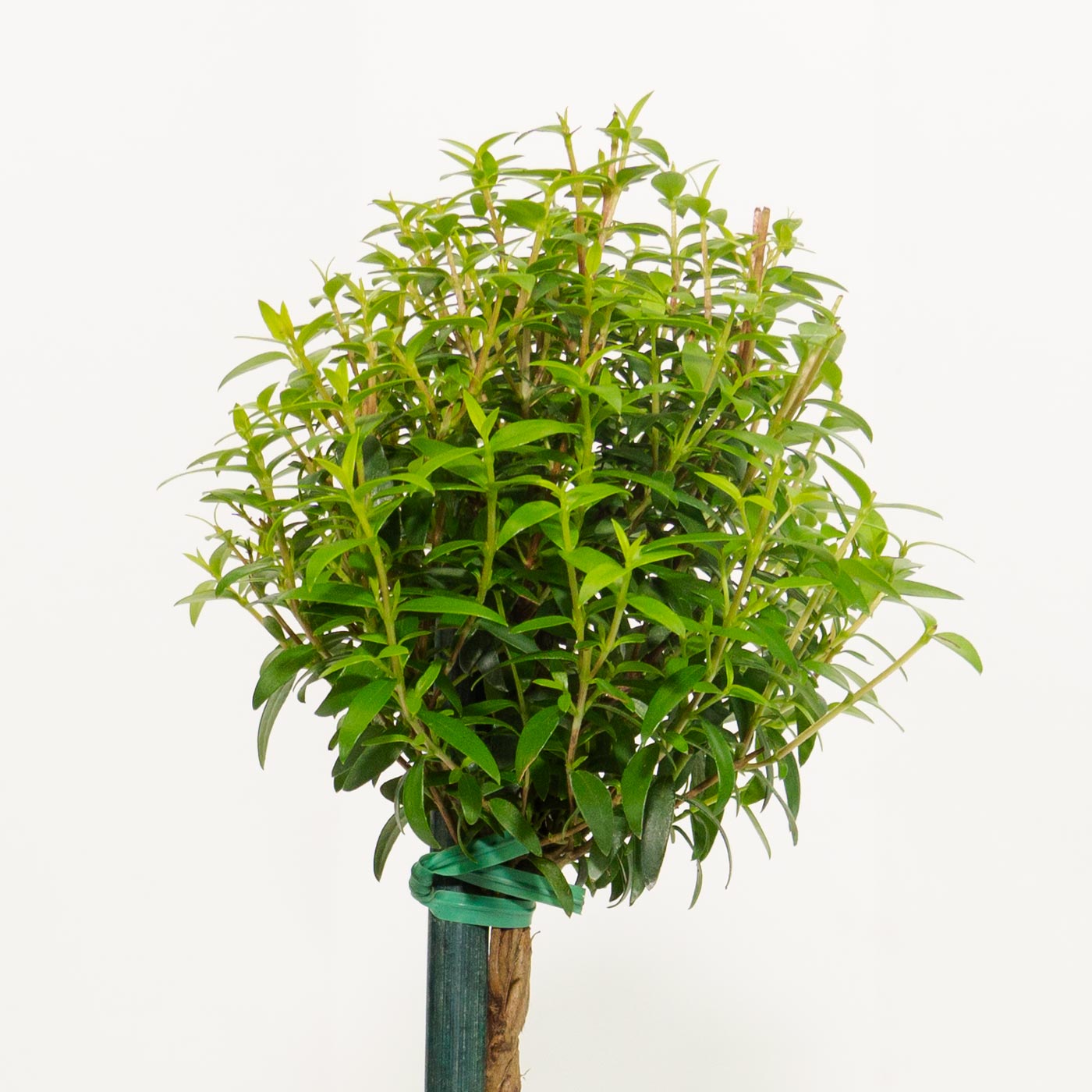Myrtle
Myrtle is a Mediterranean evergreen shrub that is pleasantly perfumed when its stems or leaves are lightly crushed. Myrtle plants are frequently mentioned in ancient writings and are still popular today. Myrtle’s produce fragrant white flowers that have a fuzzy appearance due to their numerous stamens. They are produced in summer and followed by purple-black berries.
We carry a variety of myrtle forms in several pots sizes. Most common options are 4″, 5″, and 6″ clay pots as single or double ball form. We also carry 6″, 7″, and 8″ clay pot sizes.
We grow myrtle plants in the following forms:
- Single, double, and triple ball
- Globe
- Column
- Hedge
Every now and again will will have limited quantiteis of our Top Tier Myrtle Topiaries in larger and specialty pot sizes upwards to 12-14″ includign rolled rim and other unique pot shapes.
Common Name:
Sweet Myrtle, Dwarf Myrtle
Mature Size:
Usually 1-3 ft tall and wide when planted in a container. Sweet Myrtle can get as large as 5 to 8 ft when planted in the landscape.
Growth Rate:
Slow
Optimum Temperature:
60-80 degrees fahrenheit
Characteristics:
Evergreen, fragrant leaves, excellent as a topiary or bonsai. Leaves are simple, dark green, oval to lance shaped and aromatic if bruised. Flowers appear in early summer and are fragrant, small, and white to blushed. Once flowering has occurred, tiny bluish black berries appear.
Light:
Indoor: Well-lit room, no direct sun. South or west facing windows.
Outdoor: Sweet myrtle is hardy to USDA zones 8 to 11. The plant prefers full to partial sun.
Water:
Indoor: Water thoroughly when surface soil begins to dry. Both over and under watering can be harmful to this plant.
Outdoor: Water the plant deeply once a week.
Fertalizer:
During the growing season, March through September, fertilize your topiaries with a 20-20-20 fertilizer every couple of weeks. When you bring it in for the winter, cut back feeding to once a month or once every other month.
Common Pests/Issues:
Watch carefully for sooty mold and scale insects on this plant’s foliage. Other common pests problems frequent to this plant are thrips and spider mites in hot, dry weather.
Additional Notes:
In northern climates, bring plants indoors to overwinter. Prune the plant after blooming. If you wish for it to grow into a small tree, simply remove the spent blooms and clean out any dead or diseased wood. For a hedge, sheer the plant to the size desired. Bonsai and topiary forms take more training, which should be started in infancy. You can truly shape myrtle to almost any form you like and there are dwarf forms that work well in formal gardens.


